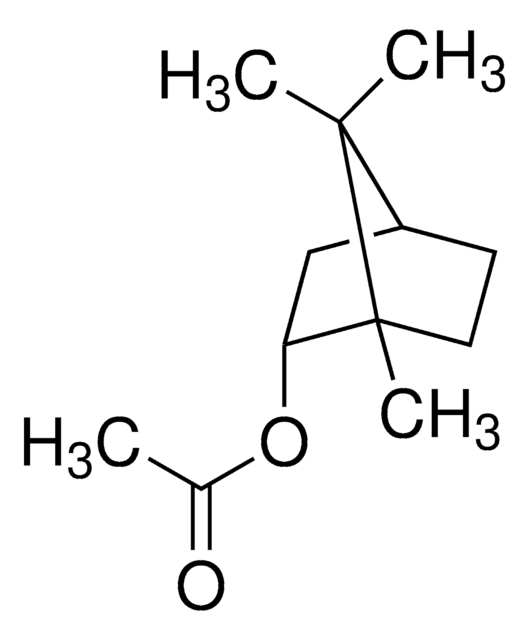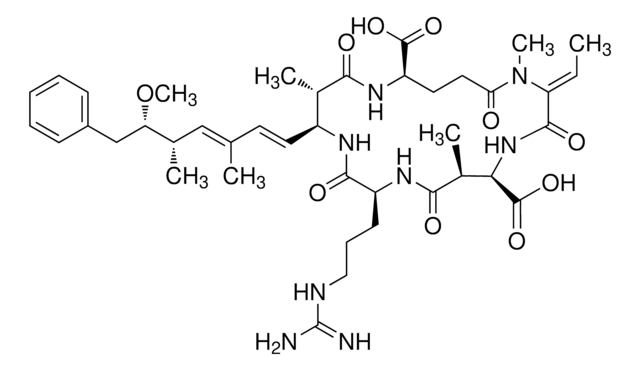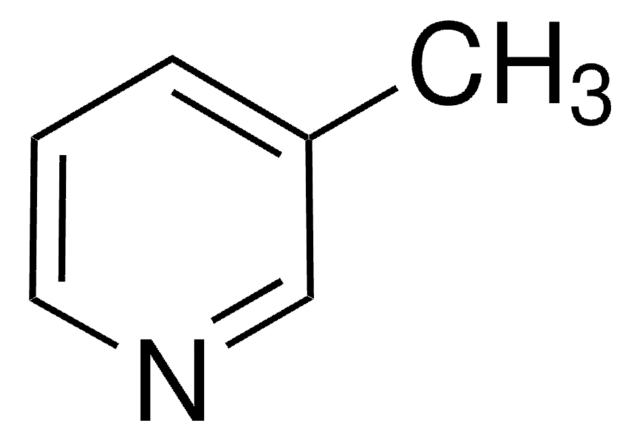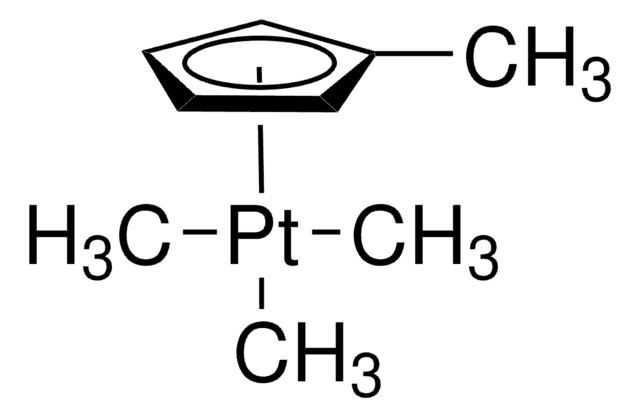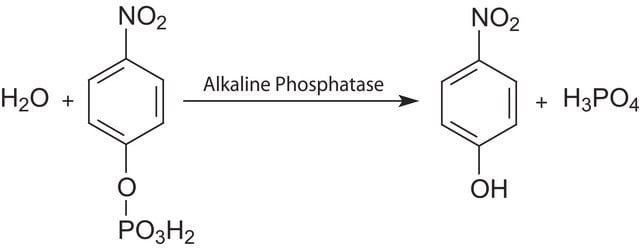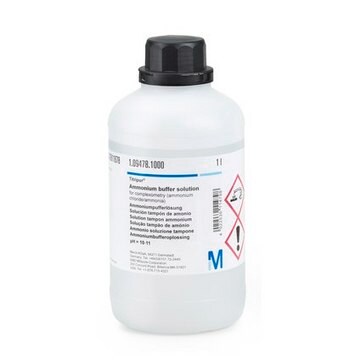A9226
Alkaline buffer solution
1.5 M, pH 10.3 (25 °C)
Synonyme(s) :
Basic pH buffer
Se connecterpour consulter vos tarifs contractuels et ceux de votre entreprise/organisme
About This Item
Code UNSPSC :
12161700
Nomenclature NACRES :
NA.25
Produits recommandés
Description générale
Alkaline buffer solution, 1.5 M, pH 10.3 at 25 °C is used in alkaline phosphatase reactions. It contains 2-amino-2-methylpropanol (AMP) and is used in conjunction with p-nitrophenyl phosphate (pNPP) enzyme substrate.
Application
Alkaline buffer solution has been used to measure the alkaline phosphatase (ALP) activity in the:
- rat bone marrow stromal cells (BMSC)
- osteoblast-like cells (SaoS-2, ATCC HTB 85)
- mouse MC3T3-E1
Autres remarques
Contains 2-amino-2-methylpropanol
Mention d'avertissement
Danger
Mentions de danger
Conseils de prudence
Classification des risques
Eye Dam. 1 - Skin Irrit. 2
Code de la classe de stockage
12 - Non Combustible Liquids
Classe de danger pour l'eau (WGK)
WGK 1
Point d'éclair (°F)
Not applicable
Point d'éclair (°C)
Not applicable
Faites votre choix parmi les versions les plus récentes :
Déjà en possession de ce produit ?
Retrouvez la documentation relative aux produits que vous avez récemment achetés dans la Bibliothèque de documents.
Les clients ont également consulté
Young-Hee Kim et al.
BMC pharmacology & toxicology, 14, 60-60 (2013-12-03)
Indoxyl sulfate (IS), an organic anion uremic toxin, promotes the progression of renal dysfunction. Some studies have suggested that IS inhibits osteoclast differentiation and suppresses parathyroid hormone (PTH)-stimulated intracellular cAMP production, decreases PTH receptor expression, and induces oxidative stress in
Salima Nedjari et al.
Scientific reports, 7(1), 15947-15947 (2017-11-23)
Stem cells therapy offers a viable alternative for treatment of bone disorders to the conventional bone grafting. However clinical therapies are still hindered by the insufficient knowledge on the conditions that maximize stem cells differentiation. Hereby, we introduce a novel
Helle Lysdahl et al.
BioResearch open access, 3(6), 278-285 (2014-12-04)
Clinical trials using bone morphogenetic protein-2 (BMP2) for bone reconstruction have shown promising results. However, the relatively high concentration needed to be effective raises concerns for efficacy and safety. The aim of this study was to investigate the osteogenic effect
Dan Huang et al.
International journal of nanomedicine, 12, 7483-7500 (2017-10-27)
Titanium (Ti) and its alloys have been widely used in clinics for years. However, their bio-inert surface challenges application in patients with compromised surgical conditions. Numerous studies were conducted to modify the surface topography and chemical composition of Ti substrates
Miriam Filippi et al.
Biomaterials, 223, 119468-119468 (2019-09-11)
Exposure of cells to externally applied magnetic fields or to scaffolding materials with intrinsic magnetic properties (magnetic actuation) can regulate several biological responses. Here, we generated novel magnetized nanocomposite hydrogels by incorporation of magnetic nanoparticles (MNPs) into polyethylene glycol (PEG)-based
Notre équipe de scientifiques dispose d'une expérience dans tous les secteurs de la recherche, notamment en sciences de la vie, science des matériaux, synthèse chimique, chromatographie, analyse et dans de nombreux autres domaines..
Contacter notre Service technique



